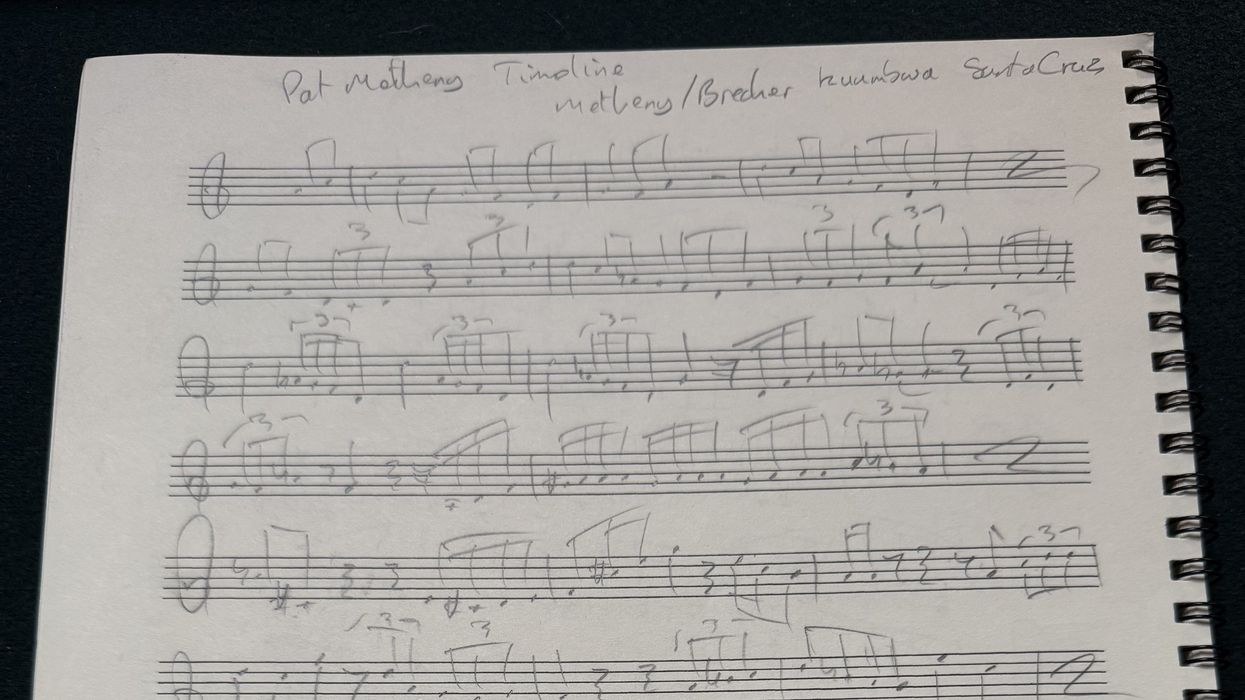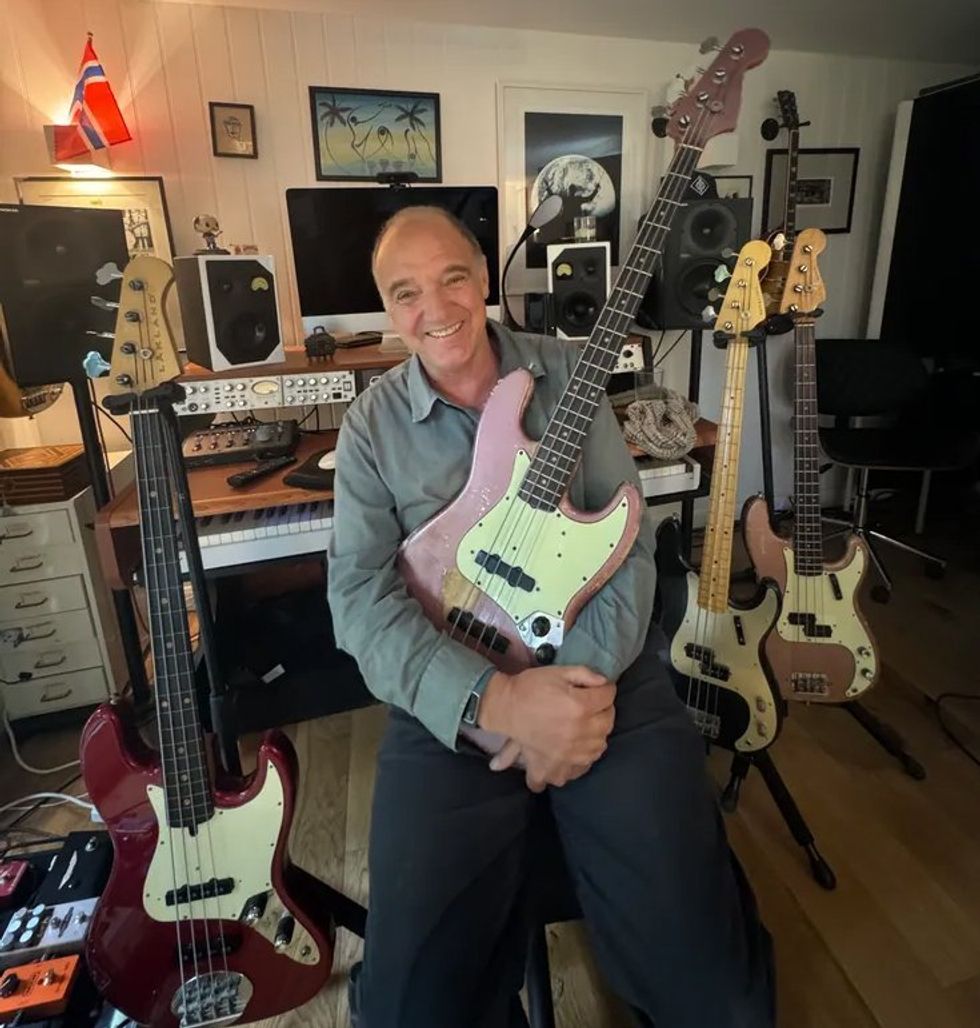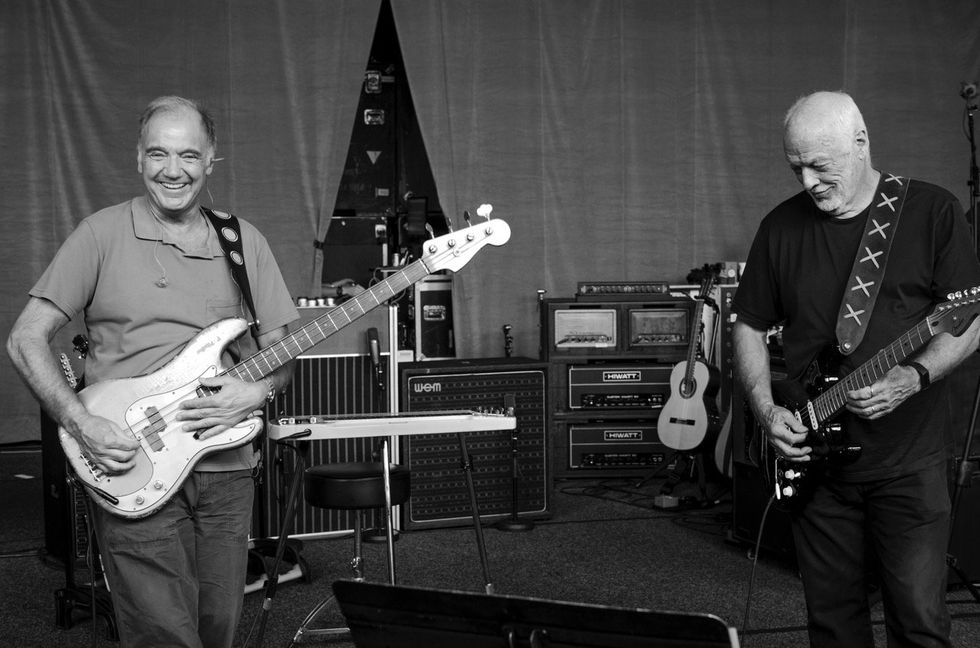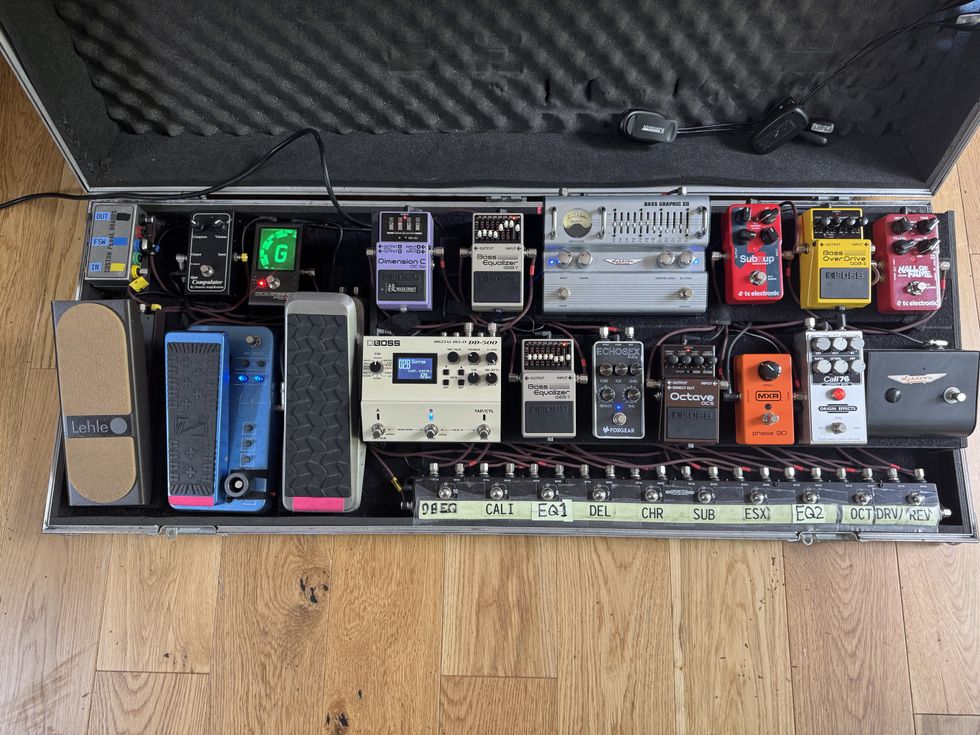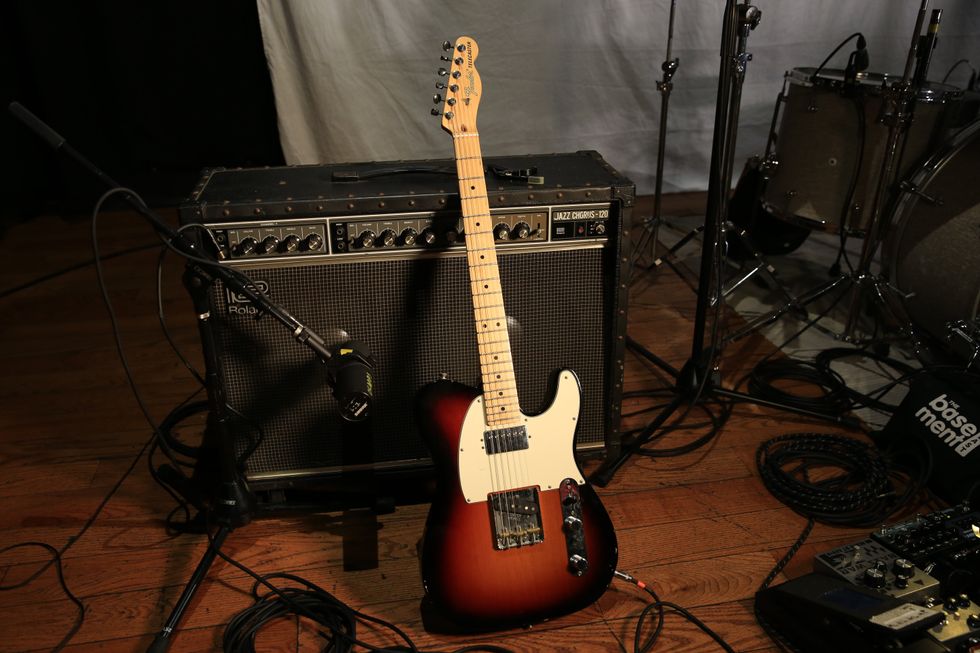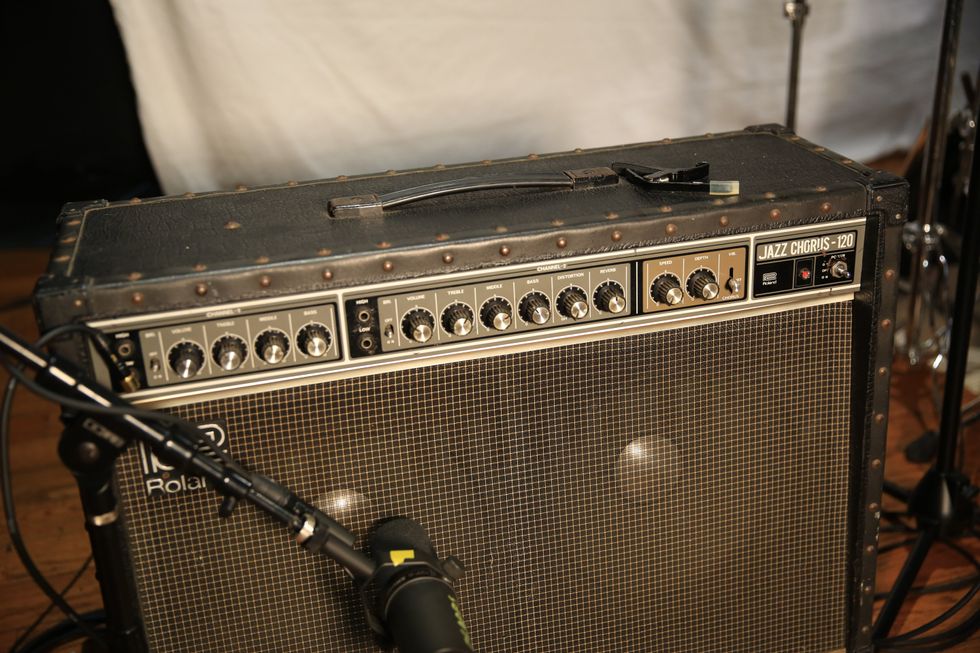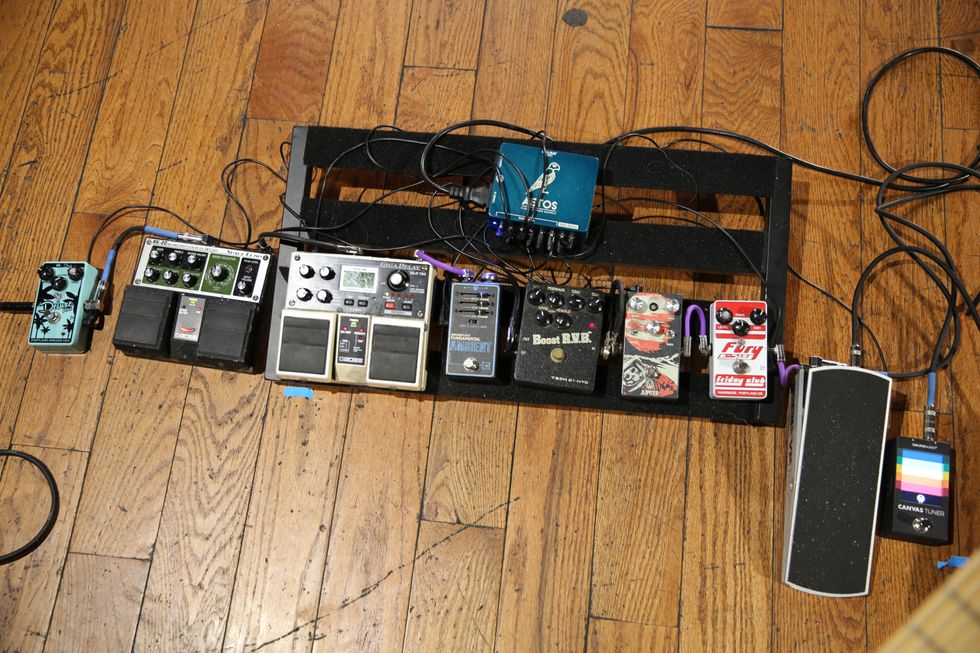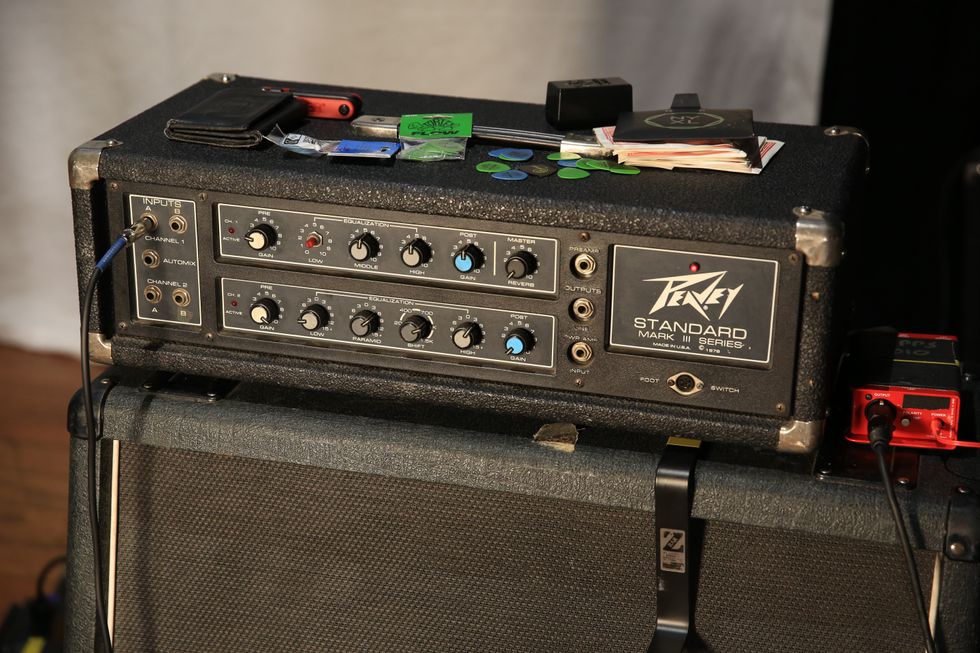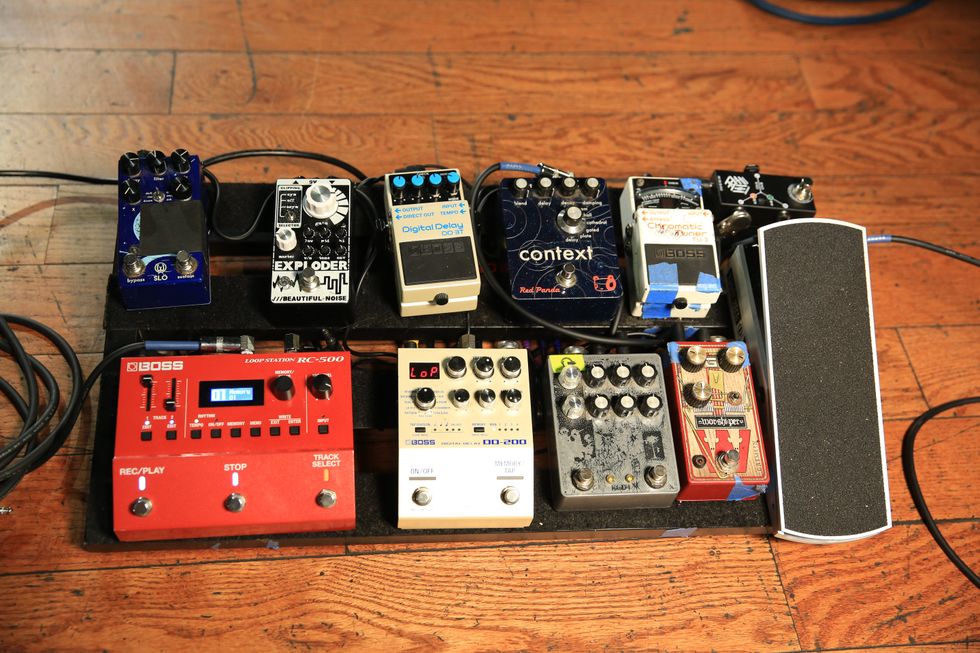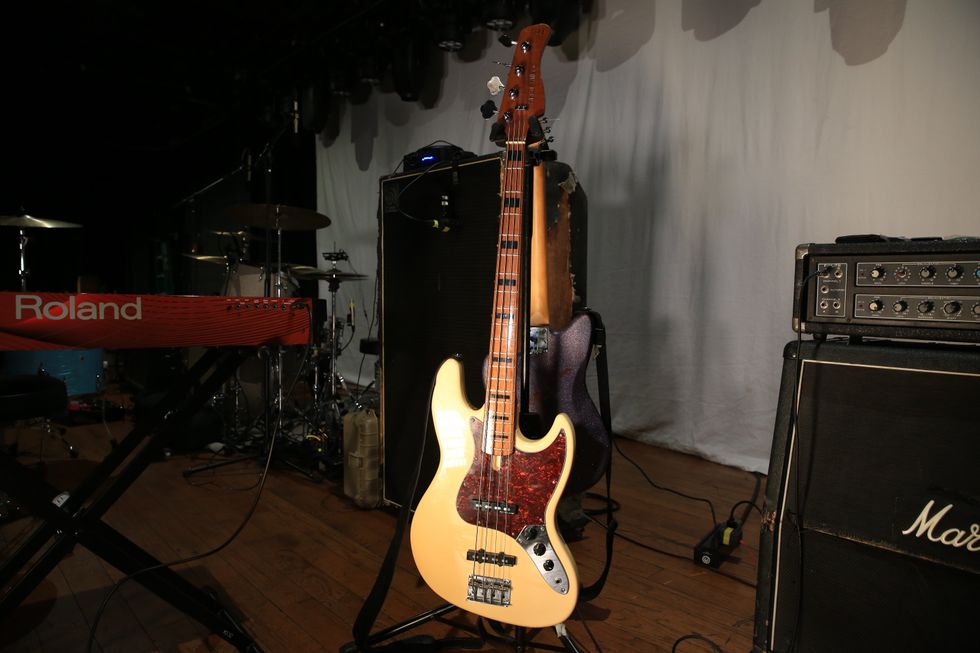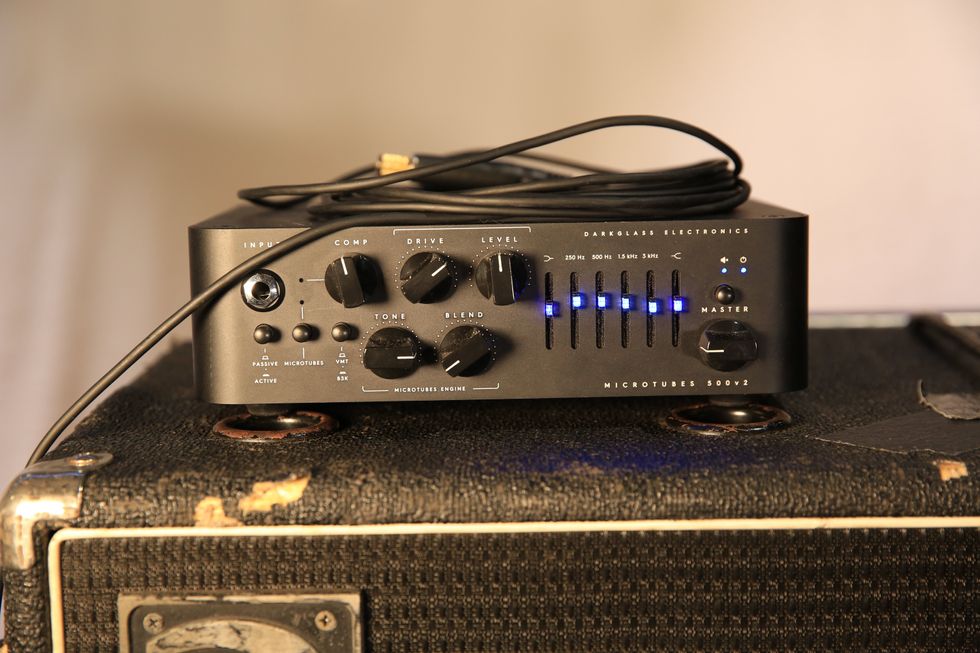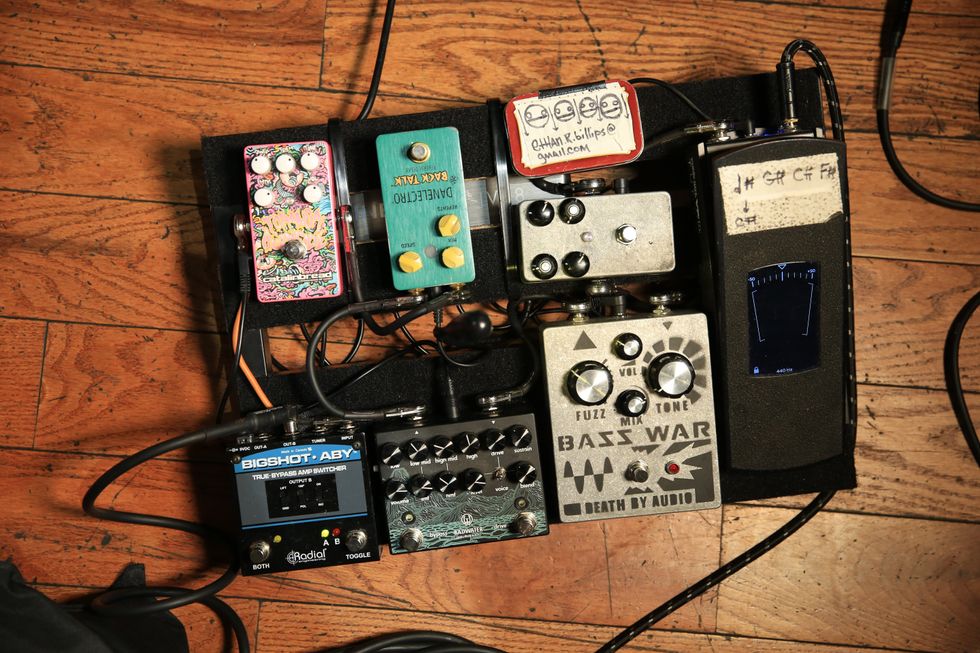The short-scale bass is often misunderstood. Though the instrument was originally marketed for beginners, experienced bassists quickly discovered the ease of play and huge lows these axes provide. Guitarists also realized that the feel of a short-scale bass was similar to that of a 6-string guitar, making it a viable tool for players who wanted a taste of the low end, but didn’t like the idea of getting used to a longer neck. Hot on the heels of their Thunderbird short-scale model, Gibson USA has released another short-scale bass, this one in the form of the famed Les Paul Junior DC. This Les Paul Junior bass draws influences from Gibson’s storied EB-0, but also benefits from the addition of some new refinements.
Simple Sophistication
The Les Paul Junior DC bass is one of several Gibson USA basses the company is unveiling this year. Along with the Thunderbird short scale (release in March) was an oversized Les Paul bass. Bassists rejoice—we’ll be seeing the Explorer and Flying V basses making their long-overdue return this year as well. And according to Gibson, 2012 also promises to be a big year for basses.
Put simply, Gibson’s LP Junior DC bass is a stunning looker. The mahogany-slab body is finished in the company’s gorgeous Pelham Blue nitrocellulose finish with a deep, baby-blue sparkle and luster. The instrument’s 30.5" mahogany neck is set into the body and topped with a rosewood fretboard housing 20 medium-jumbo frets. And the large, shamrock-style Grover tuners work in tandem with an adjustable 3-point bridge that’s also found on Gibson’s Thunderbird models.
Being a short scale with large tuners, I assumed immediately that the instrument would be rather neck heavy, but it wasn’t as evident as I thought it would be. The neck only drooped slightly after standing up with the bass and a nylon strap, and was extremely comfortable to hold in that position.
The appeal of this bass comes not only from its simple, classic look, but also from its no-nonsense electronics layout. Positioned at the neck is a huge TB Plus humbucking pickup, which is visually reminiscent of those giant humbuckers that sat in the neck position of the company’s infamous EB-0 bass. Because a muddled high end is a common issue with neck humbuckers on basses, Gibson added a ceramic magnet to bring out more snap and highs. An alnico magnet-powered TB Mini humbucker is located in the bridge position for raunchy midrange and tones with a crisp upper end. Each pickup has its own Volume control for various amounts of blending, along with a single Master Tone control. Personally, I would have preferred separate tone controls for further tonal shaping, as some situations call for less highs on the bridge, blended with a sharp, neck tone.
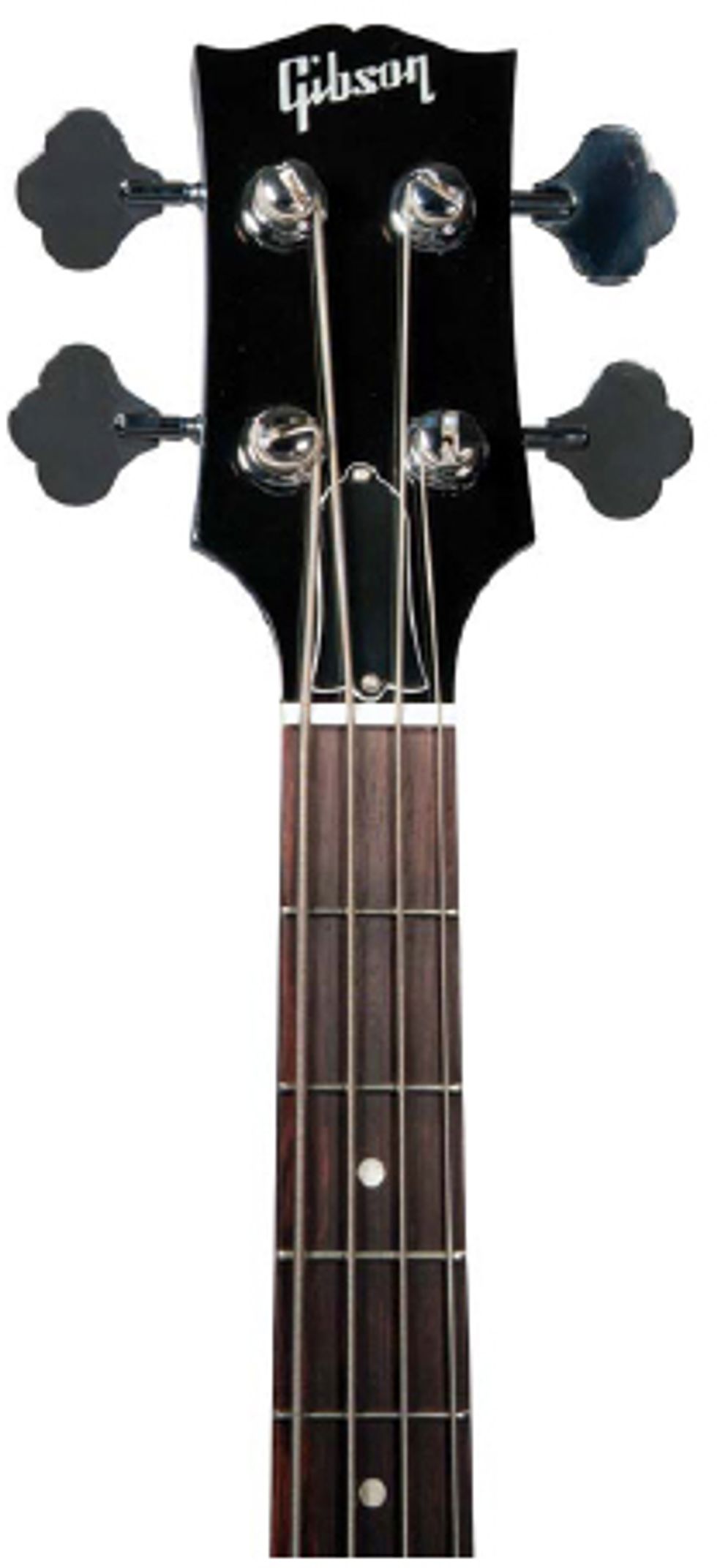 Don’t Call Me Junior!
Don’t Call Me Junior!There’s nothing quite like a good short-scale bass. Even with the incorrect “beginner’s instrument” moniker, some of the most famous players in rock, blues, and R&B have used the super-fat low end these models deliver to carve out intense grooves—Jack Bruce being the first that comes to mind. The downfall to many short-scale basses is that they aren’t known for having a ton of upper-end cut. That said, Gibson’s baby-blue rocker put that assumption to the test, and won in a landslide.
Running into a TC Electronic Classic 450 head and matching 2x10 cabinet, the Les Paul Junior DC’s neck humbucker delivered a surprising amount of meaty high end—and I do mean surprising. It wasn’t sharp and bright—it was more of a thick, rope-like grind that cut through like a knife. The low end was huge and expansive, aided by the neck’s short scale, which allows the strings to vibrate with less tension. I had to drop the neck pickup’s Volume control down about 1/4 turn from full-blast to keep the sound at a manageable volume level—otherwise, it was just overpowering.
The bridge pickup served up its own spectrum of tones, leaning towards a rounded midrange and tighter lows. The output wasn’t as hot as the neck pickup on its own, but a slight blend with the neck pickup poured out some delicious, late-’60s heavy-rock tones. This is where some of the best sounds from this bass originate—setting up the basic tone with the amp and the bridge pickup alone, and then gradually bringing in the neck pickup to fill in the extra space. As I worked through various levels of pickup mixing, I came across a really cool John Paul Jones-esque rock tone just by working with the neck pickup’s volume to get varying degrees of dynamics. Bringing in the neck pickup more yielded a fat low end—à la “Dazed and Confused”—and dropping it right after the iconic riff transformed the tone into one that was perfect for the song’s lead-heavy, driving chorus.
The Verdict
Short-scale basses are instruments that don’t get nearly enough love from players. And the Gibson Les Paul Junior DC is one that deserves some serious attention—whether you’re an experienced bassist or a guitarist looking to transition to the 4-string. On a short-scale model, the low end can be much wider and stronger than what’s normally heard from longer-scale basses, so keeping an eye on your amp’s bass control is a must. If you’re after a comfortable bass with a cool look and killer rock tones, it’s a must look.
Watch the video review:
Buy if...
you’re a bassist in need of bigger lows or a guitarist who wants a bass with somewhat the same feel as your 6-string.
Skip if...
the high-tension feel and snap of a long-scale bass is what’s needed.
Rating...
Street $1229 - Gibson USA - gibson.com |





![Rig Rundown: Russian Circles’ Mike Sullivan [2025]](https://www.premierguitar.com/media-library/youtube.jpg?id=62303631&width=1245&height=700&quality=70&coordinates=0%2C0%2C0%2C0)

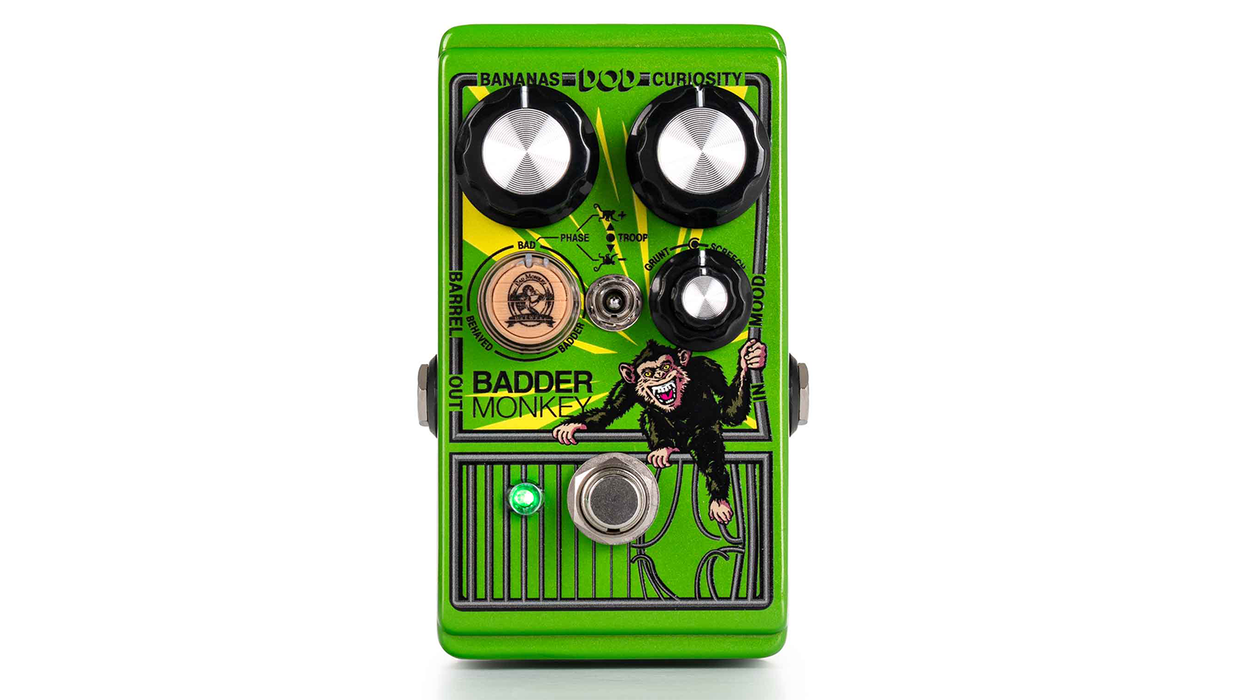
![Rig Rundown: AFI [2025]](https://www.premierguitar.com/media-library/youtube.jpg?id=62064741&width=1245&height=700&quality=70&coordinates=0%2C0%2C0%2C0)












 Shop Scott's Rig
Shop Scott's Rig





